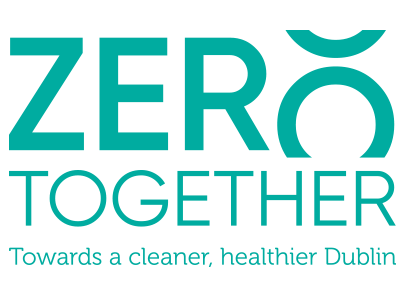Avoid, Shift and Improve Transport
Subscribe to newsletter
What is meant by transport in Dublin?
When we look at transport we are referring specifically to the land-based movement of people and goods within the county of Dublin. This means any portion of trips passing through including:
- active travel – walking, wheeling, scooting and cycling,
- public transport,
- e-micro mobility (such as electric scooters or bikes)
- private cars,
- taxis,
- light commercial vehicles, and
- heavy commercial vehicles.
In Dublin 65 per cent of transport-related emissions comes from private cars. The infrastructure is car-centric and people are in the habit of using their cars.
‘Car-centric’ means a transport infrastructure that was developed with cars as the main consideration.
This means it is a significant challenge to convince people to switch to more sustainable modes like active travel and public transport. It is also challenging to provide more alternative ways for people to travel.
Why should we move Dublin away from a ‘car-centric’ system?
There are a number of benefits to moving away from our car-centric system. This includes improving road safety by reducing the amount of cars on the road and making active travel infrastructure safer.
We can also make better use of the space currently taken up by car parking to provide public spaces that benefit the community and local businesses, making our streets more pleasant to spend time on.
Our car-centric system can also result in forced car ownership, when people have no choice but to own a car in order to access work, education, or other essential services. Car ownership is expensive – approximately €10k a year, according to the AA. This can result in something called ‘transport poverty’:
‘Transport poverty’ – when a househould spends 10% of its total expenditure on geting from one place to another
Additionally, those who simply can’t afford a car can be cut off from accessing the services they need, particulalry if there are no public transport or active travel links available.
Transport in Dublin – the current situation
According to the national Climate Action Plan 2023, the transport sector must reduce its emissions by half by 2030. At the end of October 2022, car traffic volumes in Dublin had returned to 96 per cent (almost back to the same) of pre-Covid levels, compared to the same week in 2019.
Car dependency needs to be reduced
There has been increased focus on active travel and public transport within Dublin in recent years. However, a huge amount of work is still needed to reduce car dependency and transport emissions by half in less than 7 years. How are we going to meet this challenge?
‘Compact growth’ – building within existing towns and cities. Placing housing, employment, commercial, social and community facilities in the same area or development.
The guiding principles of ‘Avoid, Shift, Improve’ were outlined in the Government’s Climate Action Plan 2022, however, they are still not being adhered to in transport planning in Dublin.
‘Avoid, Shift, Improve’:
- Avoid refers to reducing how often people take trips, and how far they travel when they do.
- Shift refers to moving to more environmentally friendly modes of transport, such as active travel (walking, cycling, scooting or wheeling) or using public transport
- Improve refers to promoting more efficient fuel and vehicles, like electric vehicle
More work needed to ‘avoid’ need for travel
There has been increased focus on the ‘Shift’ and ‘Improve’ aspects like active travel and electric vehicles. However, the crucial ‘Avoid’ principle is still being largely ignored. Measures to avoid the need for travel in the first place, such as integrated land use and transport planning, should be prioritised.
Integrated land use means planning developments so that services, employment, businesses and accommodation are close together. This would reduce the number of trips people need to make, because everything they need can be easily accessed locally. An example of this is the ‘15-minute city’ concept, which means day-to-day services and high-quality public transport are accessible within a 15-minute walk or cycle.
In many housing estates, people are forced to take longer routes to access local shops or public transport because there are walls or gates blocking quicker routes onto main roads. As a result, many people will choose to drive to get to other locations in their locality, because walking would take too long. Removing these walls and barriers would allow for quicker access to key roads, and can help people to avoid their cars. Active travel should be prioritised in these solutions by adding bollards to prevent cars driving through, and good lighting and flower planting can make these spaces feel safer and more pleasant to walk through.
New developments are too remote
Another challenge facing Dublin is that housing developments are not well connected to public transport. Rather than seeing new developments being built around existing, strong public transport hubs and corridors, they are more often situated on the outskirts of Dublin. This increases the need for a car.
A recent Organisation for Economic Co-operation and Development (OECD) report called ‘Redesigning Ireland’s Transport for Net Zero’ heavily criticised Ireland’s car-dependent transport systems. It said that a complete system transformation was needed. It was not enough to just focus on the electrification of the existing system.
For example, EVs (electric vehicles) are just one part of meeting our emission-reduction targets and they still promote car-use. They also promote developing a road infrastructure in favour of the private car.
How can we reduce transport emissions in Dublin?
The OECD report ‘Redesigning Ireland’s Transport for Net Zero’ presented policies that had the potential to be highly transformative. These were:
1) reallocating road space away from cars,
2) mainstreaming ‘on-demand shared services’ like bike and car rental, and
3) a communications effort to encourage people to be less focused on their cars.
We still have a long way to go. At a national level, the Sustainable Energy Authority of Ireland (SEAI) found that transport energy demand increased by 6.5 per cent in 2022 compared to 2021. In order to achieve our emissions targets, we need to see this number decreasing.


